#barcelonatech
Explore tagged Tumblr posts
Text
VERSIONE IN ITALIANO
«Secondary analysis showed no notable disparity in cardiovascular outcomes between BNT162b2 and mRNA vaccines. The association of COVID-19 vaccination with the risk of coronary artery disease should be considered in future vaccine technologies for the next pandemic».
Medical doctors tragically concluded in the abstract of their new explosive study Karimi et al. just published.
The research was conducted by Iranian researchers from various and prestigious health facilities or statistics of the country that we list to highlight its reliability.
Research Committee, Isfahan University of Medical Sciences, Isfahan, Iran
Department of Biostatistics and Epidemiology, School of Health, Isfahan University of Medical Sciences, Isfahan, Iran
Center for Mathematics and Applications (NOVA Math), NOVA School of Science and Technology (NOVA SST), Caparica, Portugal
Department of Statistics, Faculty of Statistics, Mathematics and Computer, Allameh Tabataba’i University, Tehran, Iran
CREB, Universitat Politècnica de Catalunya, BarcelonaTech (UPC), Barcelona, Spain
Biomedical Engineering Department, Engineering Faculty, University of Isfahan, Isfahan, Iran
Biomedical Engineering Research Centre (CREB), Automatic Control Department (ESAII), Universitat Politècnica de Catalunya-Barcelona Tech (UPC) Building H, Floor 4, Av. Diagonal 647, 08028 Barcelona, Spain
Department of Artificial Intelligence, Smart University of Medical Sciences, Tehran, Iran
After each pathology that can also become lethal by affecting the heart we have inserted links to previous scientific studies that already confirmed the high specific risks.
8 notes
·
View notes
Text

Unique hybrid device generates electricity and stores thermal energy efficiently and sustainably
An international research team led by the Universitat Politècnica de Catalunya—BarcelonaTech (UPC) has created a hybrid device that combines, for the first time ever, molecular solar thermal energy storage with silicon-based photovoltaic energy. It achieves a record energy storage efficiency of 2.3% and up to 14.9% total solar energy utilization. Photovoltaic solar energy has become one of the most important renewable sources for electricity production in the energy transition context, but it still presents challenges due to intermittent solar production and fluctuating energy demand. Therefore, efficient storage systems are needed to ensure energy availability when demand increases. However, these technologies still do not perform optimally, mainly due to the heating they experience, which affects energy production and the durability of photovoltaic systems. Additionally, current storage technologies, such as batteries, rely on unsustainable materials.
Read more.
#Materials Science#Science#Electronics#Energy#Solar power#Energy storage#Photovoltaics#Universitat Politècnica de Catalunya
11 notes
·
View notes
Text
The Best Courses for Indian Students to Pursue in Spain
Spain has become an increasingly popular study abroad destination for Indian students due to its vibrant culture, rich history, and world-class education system. With a variety of courses offered in English and Spanish, Spain provides diverse opportunities for students looking to gain a global education. Here, we explore some of the best courses that Indian students can pursue in Spain, making it one of the top study destinations.
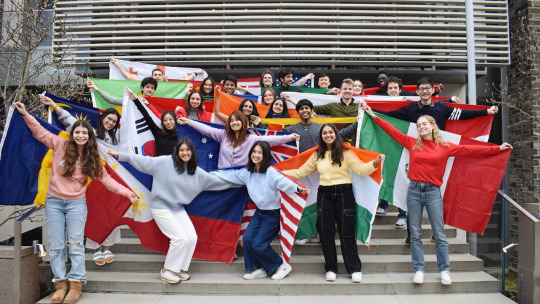
1. Business Management & MBA
Why Choose This Course? Spain is home to some of Europe's leading business schools, such as IE Business School, ESADE Business School, and IESE Business School. These institutions rank among the top globally, offering programs that focus on leadership, innovation, and entrepreneurship.
Career Opportunities Graduating with a degree in Business or an MBA from a prestigious Spanish institution opens doors to career opportunities in Europe, Latin America, and beyond. It’s perfect for Indian students looking to build a global business network.
2. Hospitality and Tourism Management
Why Choose This Course? With its picturesque landscapes, historic cities, and Mediterranean beaches, Spain is a leader in the global tourism industry. Studying Hospitality and Tourism Management in Spain provides hands-on experience in one of the world’s top tourist destinations.
Top Institutions Institutions like Universidad de Alicante and EU Business School offer specialized courses in this field, making Spain a great place to gain insights into hospitality trends and management practices.
3. Architecture and Design
Why Choose This Course? Spain’s rich architectural heritage, with iconic works by Antoni Gaudí and modern architectural marvels, makes it an ideal place to study Architecture and Design. Students can learn from the blend of classical and contemporary styles that define Spain’s cities.
Top Institutions Schools like Universitat Politècnica de Catalunya (BarcelonaTech) are renowned for their architecture and design programs, offering a unique blend of theory and practice.
4. Engineering and Technology
Why Choose This Course? Spain is also a hub for engineering, especially in the fields of renewable energy, automotive, and telecommunications. With a strong emphasis on research and innovation, Spanish universities provide a solid foundation for students looking to advance their technical skills.
Top Institutions Polytechnic University of Madrid and University of Navarra offer competitive programs in engineering, with access to research facilities and industry partnerships.
5. Spanish Language and Cultural Studies
Why Choose This Course? Learning Spanish while living in Spain is a great way to become fluent in one of the most widely spoken languages globally. Many universities offer courses in Spanish language and Hispanic cultural studies, which can be a valuable asset in the fields of translation, international business, and diplomacy.
Top Institutions University of Salamanca and Complutense University of Madrid are excellent choices for students interested in immersing themselves in Spanish language and culture.
6. Medicine and Health Sciences
Why Choose This Course? Spain’s universities are known for their high-quality medical programs, attracting students who are serious about a career in healthcare. The combination of modern facilities and opportunities for clinical experience makes it an attractive destination for medical studies.
Top Institutions University of Barcelona and University of Navarra are among the top choices for medical studies in Spain, offering rigorous coursework and practical training.
Why Study in Spain?
Affordable Education: Spanish universities offer competitive tuition fees compared to other European destinations, making it an affordable option for Indian students.
Cultural Experience: Studying in Spain allows students to experience its vibrant culture, delicious cuisine, and historic landmarks, making their educational journey both enriching and memorable.
Work Opportunities: Spain offers post-study work opportunities, enabling students to gain work experience in the European Union. This is a major advantage for students looking to build a career in Europe after graduation.
Conclusion
With its diverse range of courses and world-class universities, Spain has earned its place as a top study destination for Indian students. Whether you’re looking to advance in business, explore the arts, or immerse yourself in Spanish culture, there’s a program in Spain that can meet your needs. So, if you're considering study abroad options, look no further than Spain for an unforgettable educational experience!
0 notes
Text
From Barcelona to the Black Sea in the hunt for marine litter
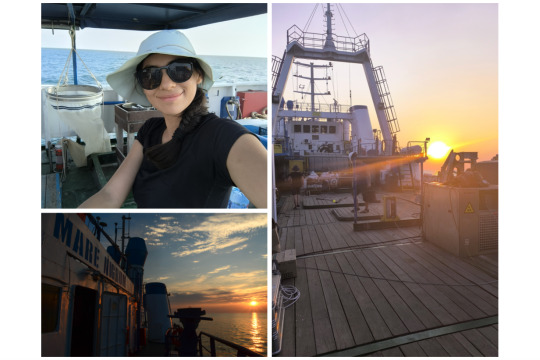
As part of the DOORS Early-Stage Researcher Exchange (ESRE) programme, Leidy Castro from the Maritime Engineering Laboratory of the Universitat Politècnica de Catalunya · BarcelonaTech (LIM / UPC) and the Universitat de Barcelona (UB), undertook a collaborative research project with GeoEcoMar (GEM) in Romania, aimed at tackling marine litter in the Black Sea.
Leidy’s research proposal was titled "Analysis of spatial distribution of marine litter pollution in the western Black Sea through numerical model integration and in situ measurements.” The exchange was supervised by Dr. Iulian Pojar Vintilă of GeoEcoMar and began at their facilities in Bucharest to learn about to learn about microplastic sample treatment, digestion, and final counts.
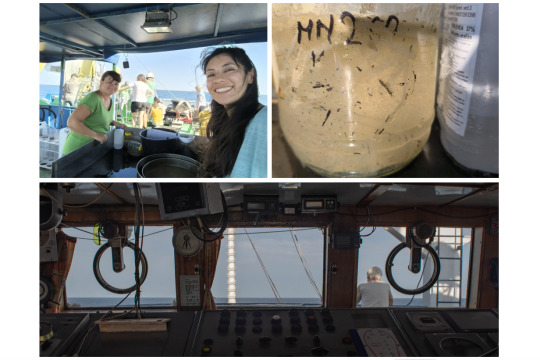
She says, “I had the pleasure of sharing time with Teodora, who guided me through all the laboratory processes. Following this, I joined an oceanographic expedition aboard the R/V Mare Nigrum from Constanța, led by Dr. Dan Vasilu as Chief Scientist. The team of researchers onboard was very welcoming and taught me about all the processes and measurements involved in a scientific oceanographic campaign.”
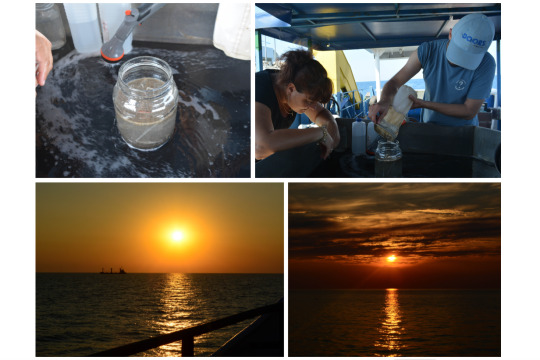
The research addresses the pressing issue of marine litter pollution in the Black Sea, focusing on both microplastics and macroplastics. In addition to the surface microplastic (plastics smaller than 5mm) sampling, the team conducted observations of microplastics (plastics greater than 5mm) from the bow of the ship during specific transects between predefined stations. This allowed them to gather in situ data on plastic density per square kilometre and identify possible "hotspots" of marine litter accumulation. These findings can be compared with numerical model predictions, specifically using the LOCATE model adapted for the Black Sea. The ultimate goal is to create a baseline of current pollution levels and to validate models that predict the movement and final destination of marine litter. This is crucial for decision-makers to develop strategies that prevent further accumulation and contamination of both open waters and coastal areas.
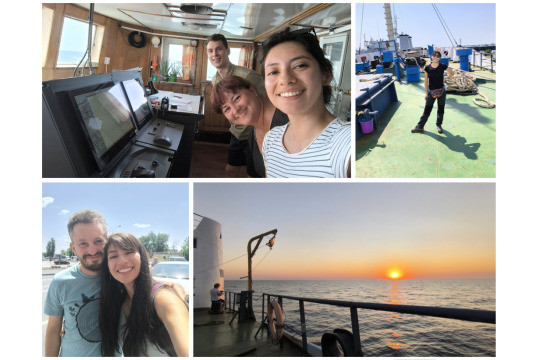
This is just one example where we have matched early stage research interests with the scientific work ongoing in the project. This summer we have funded and supported 5 other placements through the DOORS Early-Stage Researcher Exchange (ESRE). This is an international programme of collaborative research mobility activities, to foster and deepen connections within and between Black Sea countries, and international partners across Europe.
The placements have covered a range of topics supporting students from universities all over Europe:
Olga Schmitz (Germany)- Collaborative Initiative for Enhanced Water Quality Monitoring in the Black Sea Region.
Leidy Maricela Castro Rosero (Spain) - Analysis of spatial distribution of marine litter pollution in the western Black Sea through numerical model integration and in situ measurements.
Tatiana Sitchinava (Georgia) - Towards Sustainable Coastal Communities: Understanding and Mitigating Marine Litter in Romania’s Black Sea Beaches.
Alessandro Galdelli (Italy) - Advancing Marine Research through Strategic Collaboration: Integrating Cutting-edge Algorithm for Enhanced Fishing Effort Estimation in the Black Sea,
Florin Miron (Romania) - Analysing Coastal Hydrodynamics and Discharge at River Mouths: The Impact of Winds and Waves on Hydrological Processes Using SWOT Satellite Data,
Sofia Sadogurska (Ukraine) - Taxonomic studies of the Black Sea brown algae (Phaeophyceae, Heterokontophyta).
Remarking on her placement, Leidy said “This experience has been incredibly meaningful to me, both personally and professionally. It was my first time seeing the Black Sea, which holds special significance as I've spent the past three years studying it from behind a computer screen. Being part of this oceanographic expedition allowed me to witness first-hand the marine environment I've been modelling for so long, making the research more tangible and real. I learned a lot about the logistics and challenges of conducting an oceanographic campaign and was able to build valuable connections with fellow researchers and fellow cruisers like Bianca, Mihaela (both of them), Rok, Sorin, Stefano, and others. The warmth and support from both the scientific team and the ship’s crew made this experience truly memorable.”
youtube
You can follow Leidy’s journey on Instagram , LinkedIn and X, and learn more about her research.
0 notes
Text
Stabilire l'età e l'origine della Grande Macchia Rossa di Giove
Simulazioni numeriche dell’origine della Grande Macchia Rossa da una fusione di Super-storm e Vortices. Mappe di potenziale vorticità PV nei modelli Lowlow Water (SW) e EPIC. Il personale di ricerca dell’Università dei Paesi Baschi (UPV/EHU), dell’Universitat Politècnica de Catalunya-BarcelonaTech (UPC) e del Barcelona Supercomputing Center (CNS-BSC) hanno analizzato le osservazioni storiche dal…

View On WordPress
0 notes
Photo

#barcelonabodas #barcelonaartist #barcelonaliving #barcelonacannabistour #barcelonaworld #barcelonabridalweek #barcelonacannabis #barcelonamodels #barcelonatourism #barcelonacake #barcelonabeercompany #barcelonatech #barcelonatravelbloggers #barcelonaguide #barcelonavegan #barcelonaexplorers #barcelonaboy #barcelonarealestate #barcelonamommy #barcelonafan #barcelonafamily #barcelonabeer #barcelonaaloveuntold #barcelonabarcelona #barcelonaworld17 #barcelonalasramblas #barcelonawithkids #BarcelonaCampeon #barcelonart #barcelonacentre (at Madrid, Spain) https://www.instagram.com/p/B1Pdy-fHFj0/?igshid=1tjo9921pflrn
#barcelonabodas#barcelonaartist#barcelonaliving#barcelonacannabistour#barcelonaworld#barcelonabridalweek#barcelonacannabis#barcelonamodels#barcelonatourism#barcelonacake#barcelonabeercompany#barcelonatech#barcelonatravelbloggers#barcelonaguide#barcelonavegan#barcelonaexplorers#barcelonaboy#barcelonarealestate#barcelonamommy#barcelonafan#barcelonafamily#barcelonabeer#barcelonaaloveuntold#barcelonabarcelona#barcelonaworld17#barcelonalasramblas#barcelonawithkids#barcelonacampeon#barcelonart#barcelonacentre
0 notes
Text
New Masterclass in the UPC
New Masterclass in the UPC

Tomorrow I will give, again, a masterclass about illustration applied to digital products to the students of the Center of Image and Multimedia Technology of the Polytechnic University of Catalonia in Terrassa. Eagerly!
CAT. Demà impartiré, de nou, una ponència sobre il·lustració aplicada a productes digitals als alumnes del Centre de la Imatge i la Tecnologia Multimèdia de la Universitat…
View On WordPress
0 notes
Text
How to Obtain Bachelor's Degree in Spain?
Obtaining a Bachelor's degree in Spain can be an exciting and enriching experience. Spain is known for its world-renowned universities, high-quality education, and vibrant culture, which makes it a top destination for international students seeking a degree. In this blog, we will explore the steps necessary to obtain a Bachelor's degree in Spain.

Step 1: Choose Your Course and University
The first step towards obtaining a Bachelor's degree in Spain is to choose your course and university. Spain has several prestigious universities, including:
Universitat de Barcelona
Universidad Autónoma de Madrid
Universitat Autònoma de Barcelona
Complutense University of Madrid
Universitat Pompeu Fabra (Barcelona)
University of Navarra
IE University
Universitat Politècnica de Catalunya · BarcelonaTech (UPC)
Universidad Carlos III de Madrid (UC3M)
Universitat Politècnica de València
When choosing your university, it is essential to consider several factors such as course offerings, location, and cost of tuition. It is also crucial to research the admission requirements and language of instruction for each university.
Step 2: Meet the Admission Requirements
Once you have chosen your desired course and university, the next step is to meet the admission requirements. The admission requirements for universities in Spain vary depending on the university and the course.
Most universities in Spain require students to have completed high school or an equivalent degree program. International students may need to provide additional documents such as transcripts, standardized test scores, and language proficiency certificates.
It is important to note that some universities in Spain may require a certain level of proficiency in the Spanish language. Therefore, international students should consider taking Spanish language courses to improve their language skills.
Step 3: Submit your application
After meeting the admission requirements, the next step is to submit your application to the university of your choice. Most universities in Spain have an online application system, which allows students to apply from anywhere in the world.
The application process typically requires students to provide personal information, academic transcripts, language proficiency certificates, and other supporting documents. International students may also need to provide documents to prove their financial support.
Step 4: Apply for a Student Visa
International students who are not citizens of the European Union, European Economic Area, or Switzerland, need to obtain a student visa to study in Spain. The student visa allows students to enter Spain and stay for the duration of their studies. To obtain a student visa for Spain, students need to provide
Duly filled visa application form
Passport – With validity for the intended period of your stay in Spain
2 recent passport-size photos
proof of acceptance to a Spanish university,
proof of financial support,
a medical certificate.
Health insurance
Criminal record certificate
Students should apply for a student visa at the Spanish consulate or embassy in their home country.
Step 5: Arrive in Spain and register with the University
Once you have obtained a student visa, the next step is to arrive in Spain and register with the university. Students are required to register in person at the university's administrative office.
During registration, students need to provide their personal information, academic transcripts, and other supporting documents. Students may also be required to take language proficiency tests to determine their level of Spanish.
Step 6: Pay tuition fees
After registration, students are required to pay their tuition fees. Tuition fees in Spain vary depending on the course and the university. International students may also be required to pay an additional fee for healthcare and insurance.
Step 7: Attend Classes and Complete Your Degree
After paying tuition fees, students can attend classes and start working towards their Bachelor's degree. The duration of a Bachelor's degree program in Spain typically ranges from three to four years, depending on the course and university.
Students are required to complete all the required coursework, exams, and assignments to obtain their degree. In addition, students may need to complete an internship or a research project as part of their degree requirements.
Step 8: Obtain your Bachelor's degree
Upon completion of all the required coursework and degree requirements, students will obtain their Bachelor's degree. Students will receive a diploma from their university, which certifies that they have completed the required coursework and obtained a Bachelor's degree.
Obtaining a Bachelor's degree in Spain is a rewarding experience that offers many benefits. Not only does it provide access to high-quality education, but it also allows students to immerse themselves in the vibrant culture of Spain. However, the process of obtaining a degree in Spain can be challenging, particularly for international students. Therefore, it is crucial to plan and prepare well in advance to ensure a smooth and successful experience.
How to Make the Most of Your Study Abroad Experience in Spain?
Here are some additional tips for students who are considering obtaining a Bachelor's degree in Spain:
Research the culture: Spain has a rich and diverse culture, which is reflected in its universities and student life. Take the time to research and learn about the culture to better understand the social and academic environment.
Take advantage of student life: University life in Spain is exciting and offers many opportunities for personal and academic growth. Join clubs, participate in cultural events, and make connections with other students to make the most of your experience.
Budget carefully: Spain can be an expensive country to live in, particularly in major cities like Barcelona and Madrid. Therefore, it is crucial to budget carefully and plan for living expenses, such as housing, food, and transportation.
Explore the country: Spain is a beautiful country with many historical sites, natural wonders, and cultural attractions. Take advantage of your time in Spain to explore the country and immerse yourself in its rich history and culture.
In conclusion, obtaining a Bachelor's degree in Spain is an exciting and rewarding experience that offers many opportunities for personal and academic growth. Obtaining a Bachelor's degree in Spain requires commitment, dedication, and hard work. By following the steps outlined in this blog and taking advantage of the tips provided, you can ensure a successful and fulfilling experience.
Source:
#bachelors in spain#study abroad#study in spain#international students in spain#abroad education#univesities in spain
11 notes
·
View notes
Photo

Universitat Politècnica de Catalunya BarcelonaTech: Characterization of 3D Printing for Ceramic Fuel Cell Electrolytes Albert Folch Alcaraz recently submitted a Master’s thesis to the Universitat Politècnica de Catalunya BarcelonaTech. In ‘Mechanical and Microstructural Characterization of 3D Printed Ceramic Fuel... View the entire article via our website. https://buff.ly/2zMkOXu
1 note
·
View note
Text
Noise harming ocean invertebrates and ecosystems
Scientists reviewed hundreds of studies on the impact of noise on marine invertebrates (such as crabs, molluscs, squid, prawns and worms). They concluded that noise caused by humans is harming invertebrates in numerous ways, from cellular level to entire ecosystems. The international team, including Universitat Politècnica de Catalunya — BarcelonaTech (UPC) and the University of Exeter, call for urgent research to investigate and mitigate these impacts. “Many people are surprised to discover that invertebrates can even perceive sounds, but in fact sound is fundamental to their survival,” said first author Dr Marta Solé, from UPC. “Light doesn’t travel very well in water but sound does, and invertebrates use sound in a variety of ways. “Human activities — especially shipping — are changing the ocean soundscape rapidly, and our study brings together the latest evidence on the impacts of this.” The study highlights the multiple impacts of anthropogenic (human) noise on invertebrates: It can delay hatching and egg development in crustaceans, and significantly increase abnormalities and death rates among larvae of crustaceans, bivalves (eg mussels and oysters) and gastropods (eg snails). Low-frequency sounds can cause injuries and even death. For example, research has shown that sound from underwater explosions can kill blue crabs. After an increase of cephalopods (eg squid and octopus) washing up on beaches in Spain, research showed that noise had damaged their statocysts (hearing organs that help them navigate). Impacts on behaviour include many species displaying a “startle” reaction in response to loud sounds. Long-term exposure to noise also affects behaviour. For example, ship sounds limit the ability of shore crabs to change colour to camouflage themselves Physiological changes have also been discovered. For example, Mediterranean common cuttlefish showed changes in the protein content due sound exposure — with some of the affected proteins related to stress. In another study, permanent high-level exposure to sound caused a significant reduction in growth rate and reproduction, an increase in aggressiveness and mortality rate, and a reduction in feed intake of shrimp. By changing the behaviour and health of predators and prey in complex food webs, noise can affect entire ecosystems — and the researchers say more research is needed to investigate this. Recent studies have revealed that a wide range of invertebrates are sensitive to sounds, especially via sensory organs whose original function is to allow maintaining equilibrium in the water column and sensing gravity. Invertebrates can detect underwater sound through three types of sensory systems: “superficial” receptors on their body surface, internal “statocyst” receptors (equivalent of ears), and flexible “chordotonal” appendages that sense vibrations. They can also produce sounds — ranging from the “cough” of scallops to the creaks made by lobsters, crayfish, shrimps and crabs, possibly to ward off predators. “Our study underlines that these animals exist in a rich underwater soundscape,” said Dr Sophie Nedelec, from the University of Exeter. “We urgently need to know more about the impacts of noise pollution on these animals and ecosystems. “Considering that noise can affect invertebrates from cellular to ecosystems level, we need to bring together interdisciplinary expertise to embrace a holistic vision of the problem. “Given the many pressures being caused by humans — including from climate change and fisheries — we must do everything we can to limit underwater noise.” Ships and boats are the main sources of marine noise, but a wide range of other activities including drilling, dredging and sonar also cause noise. Seabed mining in international waters could be permitted for this first time later this year, and a recent study by Exeter researchers raised concerns about the noise impacts on wildlife.
0 notes
Text
Fractus and the UPC create a technological hub to develop "deep tech" solutions
Fractus and the UPC create a technological hub to develop “deep tech” solutions
Barcelona, Spain, September 14, 2022 /PRNewswire/ — Fractus and Universitat Polytechnica de Catalunya – BarcelonaTech (UPC) have agreed to create Fractus-UPC Deep Tech Hub, a center of research activities where deep technical technologies will be designed and developed, aiming to develop disruptive technological solutions based on scientific challenges with wide potential and social impact.…

View On WordPress
0 notes
Text
¿Son recomendables las ‘mascarillas de tela’? | Salud | La Revista
¿Son recomendables las ‘mascarillas de tela’? | Salud | La Revista

Mónica Ardanuy, Universitat Politècnica de Catalunya – BarcelonaTech; Diana Cayuela, Universitat Politècnica de Catalunya – BarcelonaTech; Enric Carrera i Gallissà, Universitat Politècnica de Catalunya – BarcelonaTech y José Antonio Tornero, Universitat Politècnica de Catalunya – BarcelonaTech
Recientemente han aparecido algunas noticias en las que se duda de la eficacia de las denominadas…
View On WordPress
0 notes
Text
El aumento del trabajo infantil: el efecto de la pandemia del que nadie habla
El aumento del trabajo infantil: el efecto de la pandemia del que nadie habla

Shutterstock / Arcscapes
Maria Celeste Ruiz, Universitat Politècnica de Catalunya – BarcelonaTech and Núria Pedrós Barnils, Universitat Politècnica de Catalunya – BarcelonaTech
El trabajo infantil, tal y como afirman la Organización Internacional del Trabajo (OIT) y UNICEF, es fruto de la combinación de factores como la pobreza, las emergencias regionales y la migración. También es una…
View On WordPress
0 notes
Video
vimeo
QuantumCAT from ICFOnians on Vimeo.
The aim of QuantumCAT is to promote technology transfer and innovation projects with an industrial and social impact in the short and medium term. To achieve this, it aims to focus on transferring discoveries made in research laboratories to the market, by means of industrially viable implementations and applications, addressing three main problems. Firstly, to promote specific and high-potential laboratory technologies and to encourage their industrial deployment and implementation through collaborative and cooperative research efforts. Secondly, to facilitate the dissemination of successful development and innovation strategies at the community level. And thirdly, to conduct outreach actions, such as networking events and workshops, aimed at academic and industry audiences, to discuss experiences and collaborations, as well as share knowledge among the community regarding success stories and use-case studies.
Coordinated by ICFO, QuantumCAT includes leading research institutions in Catalonia, such as ICFO itself, the Autonomous University of Barcelona (UAB), the Polytechnic University of Catalonia · BarcelonaTech (UPC), the University of Barcelona (UB), the Fundació i2CAT, the Barcelona Supercomputing Center (BSC), the Catalan Institute of Nanoscience and Nanotechnology (ICN2), and together with the Institute of High Energy Physics (IFAE) and the National Center of Microelectronics (CNM) as collaborators. It also includes different industrial players, such as Metempsy, Volkswagen Group, MemComputing, VetGENOMICS, BcnInnova, Keysight Technologies, Quside, AIA Group, Everis, and Telefónica I + D, among others.
quantum-cat.cat
0 notes
Link
La COVID-19 ha supuesto mejoras en materia de emisiones, biodiversidad y protección de océanos. Esto es, los Objetivos de Desarrollo Sostenible 13, 14 y 15.
También se ha trabajado en otros objetivos de forma parcial. Se han creado, por ejemplo, alianzas multilaterales y formas de colaboración multinivel que suponen avances en el ODS 17. Pero falta liderazgo europeo, pues no se han dejado atrás las dinámicas geopolíticas.
Se ha mejorado la sostenibilidad urbana, el ODS 11. Ha mejorado la calidad del aire urbano y se han vuelto a ver estrellas de noche –debido a la ausencia de coches en autovías iluminadas, por ejemplo–, aunque todavía queda mucho por hacer para reducir las emisiones y la contaminación lumínica.
Además, hemos visto la expansión del uso de las tecnologías de comunicación online mientras caen las barreras e inercias culturales y sociales que limitaban su uso. Son un paso en la buena dirección para lograr el ODS 9.
Una pausa para recapacitar
Pero quizá el aspecto más positivo de la COVID-19 no sea perceptible. Es algo que no se puede cuantificar, ni se puede inscribir a un ODS.
Para no desestabilizarse, la sociedad y la economía necesitan crecer, acelerarse. Están condenadas a una incesante innovación. La desaceleración que estamos viviendo desestabiliza ese statu quo, pero permite tener experiencias vitales que nos abren a preguntas sobre a dónde queremos ir o en qué sociedad queremos vivir.
La dicotomía entre aceleración y desaceleración no debe confundirse con el debate entre crecimiento y decrecimiento. Aquí planteamos la distinción que hace Norbert Elias entre sociogénesis y psicogénesis.
Recordemos cómo la COVID-19 ha alterado nuestra vida cotidiana, hábitos, patrones de conducta, etc. La reducción del tráfico, el menor consumo de energía, el uso de tecnologías digitales, el consumo más responsable y de proximidad, la compra de productos más saludables y ecológicos, la reducción de compras superfluas y de la generación de residuos son aspectos ambientalmente positivos.
Pero aparte de estos aspectos positivos, la COVID-19 ha sido demoledora para la economía. Aunque las actividades que se han podido digitalizar de manera eficiente han evitado efectos nocivos.
¿Es posible un cambio de mentalidad?
Existen políticas climáticas basadas en internalizar costes a través de fiscalidad ecológica. La clásica ecuación de Commoner, Ehrlich y Holdren (1972) planteaba que el impacto ambiental es el producto de la población, el consumo y la tecnología. Pero ahora vemos el papel de otra variable: el comportamiento, la psicogénesis. Las infraestructuras mentales de la aceleración son muy potentes. ¿Cómo puede la COVID-19 modificar estas infraestructuras psicológicas?
No somos optimistas respecto el potencial que puede tener el análisis FODA (Fortalezas, debilidades, oportunidades y amenazas). Nos señalará los puntos flacos de nuestra competencia. Es miope sentirse genial por las debilidades de nuestros vecinos; la economía del bien común advierte que una economía local débil, a largo plazo, nos debilita.
Necesitamos activar esa psicogénesis. Pasar de maximizar a optimizar. Pasar de la ventaja comparativa a pensar en ventajas absolutas, no comparativas, para poder apreciar oportunidades de generar valor agregado. Pasar de la especialización a la diversificación. Pasar de la competencia a la colaboración.
En ocasiones se trata de enfocar bien la pregunta. Nos deberíamos fijar más en las oportunidades de la conmoción antropológica que ha provocado la COVID-19. Esta nos invita, de malas maneras, a modificar nuestros hábitos, costumbres, etc., pero podemos ver en todo ello un lado positivo.
A la vez, debemos observar las disfuncionalidades encubiertas en supuestos de vieja normalidad. Más que provocarlas, la COVID-19 acentúa esas desigualdades en cuanto a oportunidades de vivir y sobrevivir. Sería un error pretender salir de la crisis provocada por esta pandemia con una nueva aceleración de la mano de la inteligencia artificial, la digitalización, etc.
La respuesta no está en la tecnología
El informe Nuestro futuro común (1987), de la Comisión Brundtlandt, ya indicaba que la tecnología podía suponer beneficios para el medioambiente, incluso antes de su desarrollo exponencial. Pero confiar en las mejoras tecnológicas infinitas (dentro de la ecuación de Commoner, Ehrlich y Holdren: Impacto humano = Población x Consumo x Tecnología) es considerar que la Ley de Moore tiene validez eterna (las mejoras suceden es espacios temporales acotados).
El propio sector de las tecnologías de la información se enfrenta a límites de materiales. En el siglo XXI surgen, por así decir, nuevos límites, después de medio siglo del informe Los límites del crecimiento del Club de Roma.
A pesar del pesimismo y mala prensa que rodean a la humanidad, debemos recuperar la confianza en nuestra infinita capacidad de aprendizaje. La COVID-19 evidencia cómo hemos llenado nuestro vacío interior de manera errónea, con aceleración y vaciando el mundo exterior. El desarrollo exponencial de las tecnologías acelera la transición a un mundo vacío en recursos y lleno de residuos.
Hemos de cambiar el modo de ver el mundo como decía Donella Meadows:
“Las personas no necesitamos coches enormes, ni armarios abarrotados de ropa, etc., tan solo sentirnos atractivas, obtener reconocimiento, amor, alegría. Pretender llenar todo esto con cosas materiales no hace más que aumentar nuestro apetito, hacerlo insaciable, con falsas soluciones”.
La COVID-19 nos pone delante de espejo para identificar esas disfuncionalidades de la que ahora consideramos vieja normalidad. No está claro que la nueva normalidad conduzca a esa transformación interior o a una nueva aceleración.
Sin embargo, hay propuestas saludables y regeneradoras en las que la salud, la ecología, la economía y la ética no está disociadas. Albert Camus dijo: “El único medio para combatir la peste es la honradez”.
Jordi López Ortega, profesor asociado, Universitat Politècnica de Catalunya – BarcelonaTech. Es miembro de la junta de las asociaciones REVO y fundador de Forum Ecologic.
0 notes
Photo








Architecture & Politics
Jose Luis Sert : Former US Embassy in Baghdad 1955-1959
· Today abandoned ·
This is how a masterpiece of avant-garde architecture with Spanish signature has been abandoned due to political disagreements since late 1960s till now.
Although the pictures above were taken in 2011, the complex was bombed in 2003 by US army, now is closed, abandoned and surrounded by tall cement walls, withouth a legal owner.
The late years it has been recognized by DOCOMOMO as a modern architectural building complex in danger.
Architects: Pedro Azara from UPC (Barcelona) and Ghada Siliq from (Bahgdad) have informed this situation through a range of research articles on the web, thanks to them and all you people interested on architectural heritage and building preservation.
Let's go to the facts known:
70s. After US Embassy left the headquarters in 1968 due to political disagreements, Iraqi government decided to move there the headquarters of Ministry of Foreign Affairs.
80′s. Later, in eighties the Building complex changed owners and happens to be the Headquarters of Intelligence Services for Saddam Hussein Government.
Fortunately, the architects which assesored the president achieved the managment and the work of Sert haven’t suffer important modifications, it remained in good condition and well preserved until 2003,
2003. Time that US army bombed the former embassy of their own country, crazy.. After that, the building began its decay. After the zone was bombed, the location has become a restricted area (called 'green area') in Baghdad. Meanwhile US embassy continued using the building as a secondary dwelling while they raised their new embassy headquarters.
2010. The US embassy finally returned the headquarters to the Iraqi government which transferred the property to the Deputy Prime Minister of Iraq, later accused of terrorism. He fled to Iraqi Kurdistan. Since then, the property remains in a legal limbo.
2017. HOPE. Although there were signs of an attempt to preserve one of the best works of Spanish Architect, Jose Luis Sert, today we have any news about, waiting hopefully can be solved soon.
Certainly, there are lot of buildings and architectures around the world that have never been given the recognition it deserves, also it’s worrying how buildings are sometimes wrongly judged by population as a mere [overrated or underestimated] Symbol instead to value them as an architectural work, its contribution through history and how affects to people's lives.
The articles below worth to read.
2008 Recinto de la embajada americana en Bagdad (1955-1959). José Luis Sert EN - ES +
2011. ‘Former American Embassy in Baghdad, Iraq designed by Jose Luis Sert 1957-59: A ruin that nobody wants’. An article written by Pedro Azara (Universitat Politècnica de Catalunya. BarcelonaTech [UPC]. EN +
2011. Josép Lluis Sert: Antigua embajada norteamericana en Bagdad (1957),hoy ES +
2013. Una historia de la antigua sede de la embajada norteamericana en Bagdad (Iraq), de José-Luis Sert (1955-1957) ES +
images: Taken by Ghada Siliq. Baghdad. (2011)
plans: +
Jose Luis Sert was the first architect of Spanish avant-garde, Apostle of rationalism in Spain, dean of architecture at Harvard for almost two decades. Sert was a man full of contradictions, a free verse in a world dominated by serial production.
bio +
documental: Josep Lluís Sert: un sueño nómada +
#ConcreteIsBeautiful#jose luis sert#spanish avant-garde#concretestructures#modern architecture#docomomo#heritage architecture#abandoned building#arquigraph#architectural design#architectural plans#modernarchitecture#sosbrutalism#architecture and politics#abandoned architecture#institutional architecture#architecture#politics#architecture & politics
93 notes
·
View notes